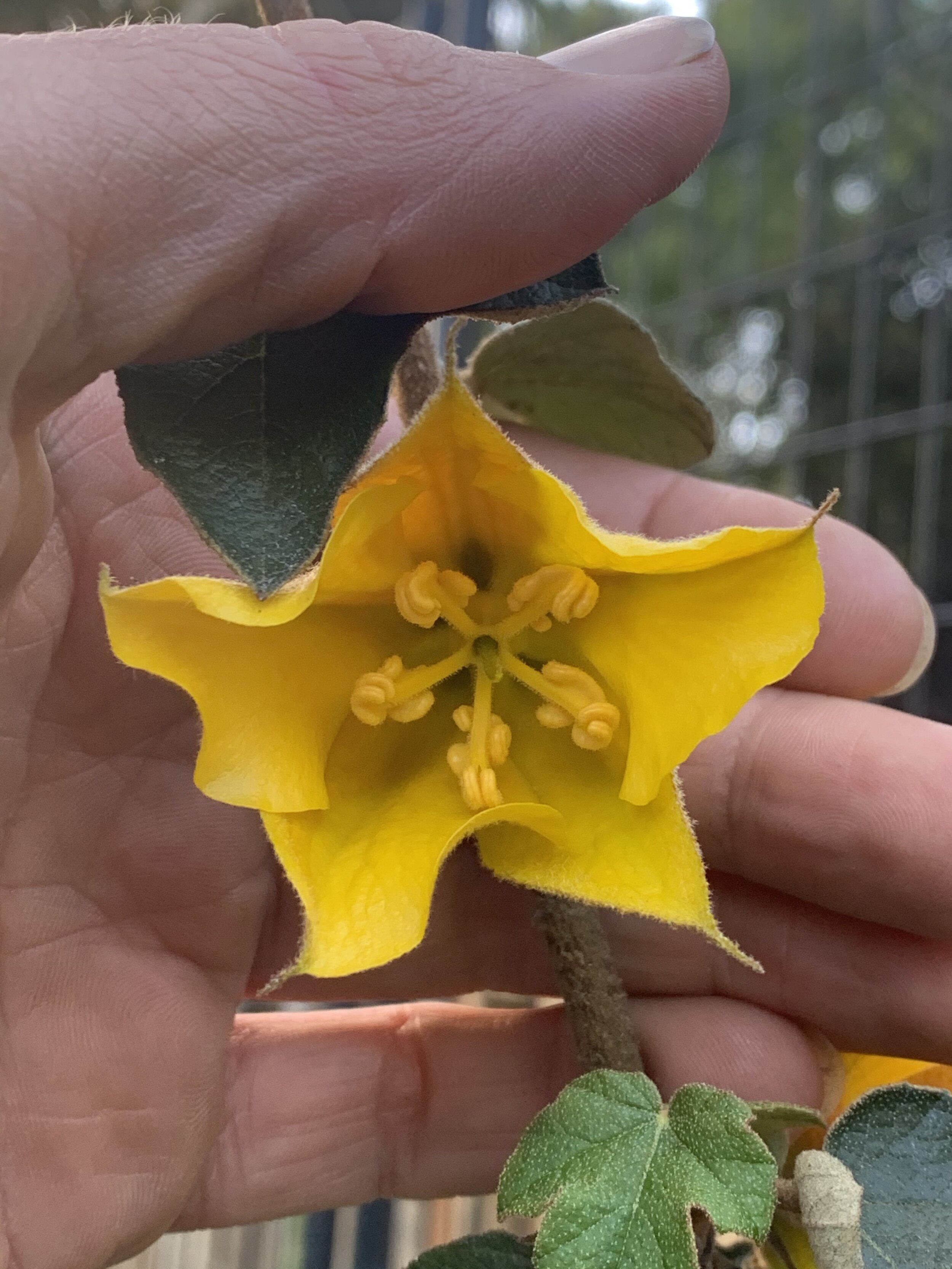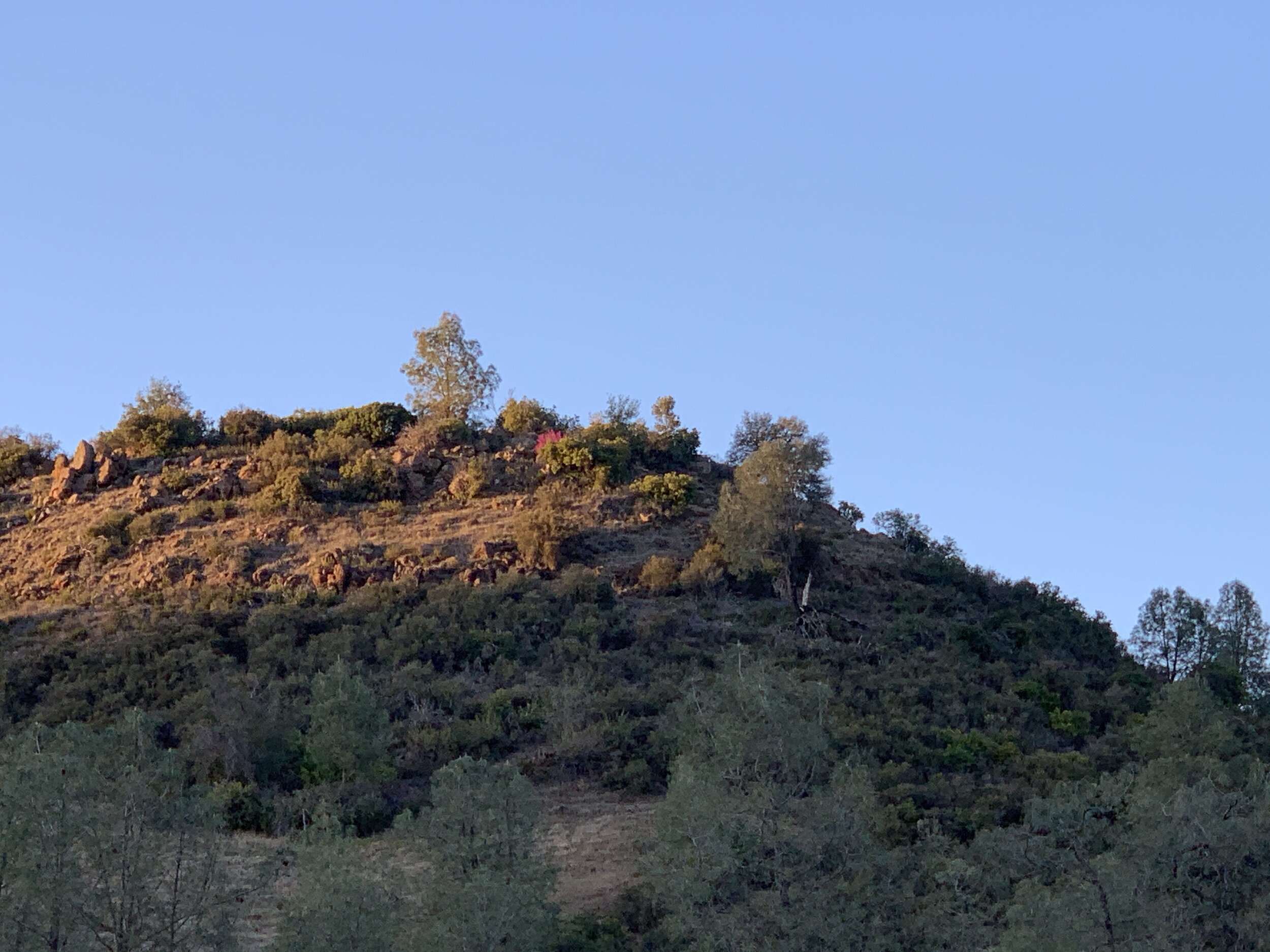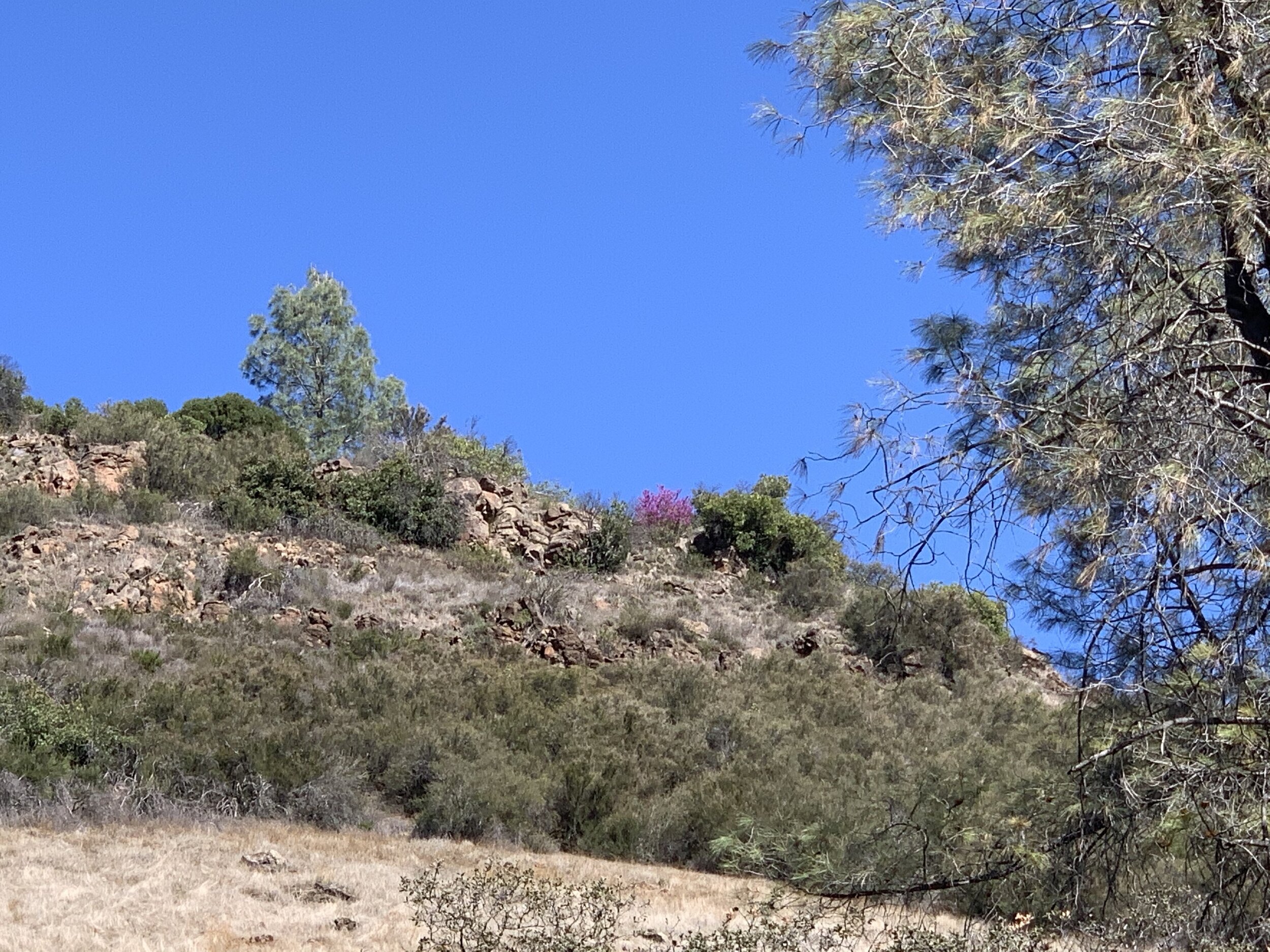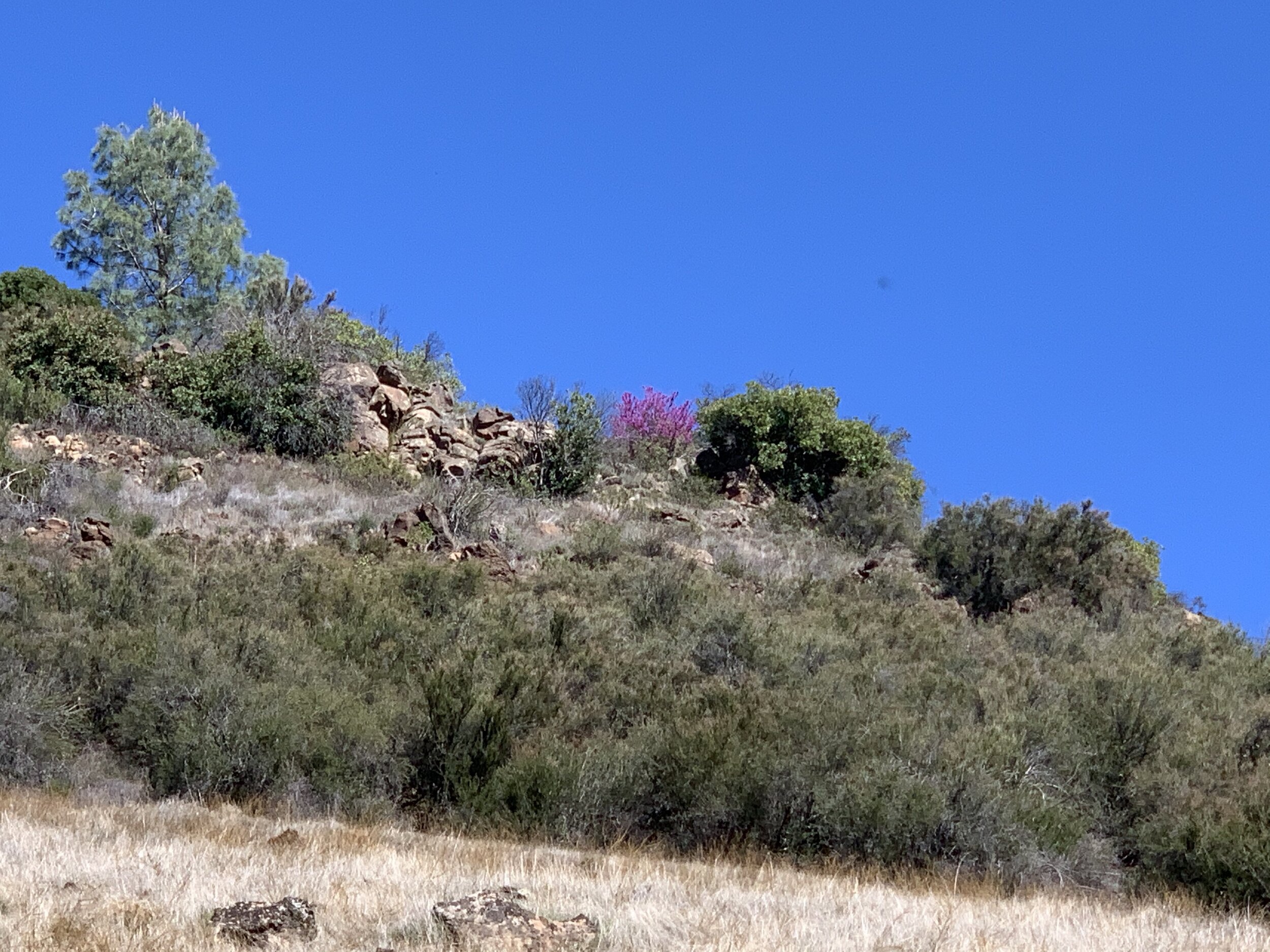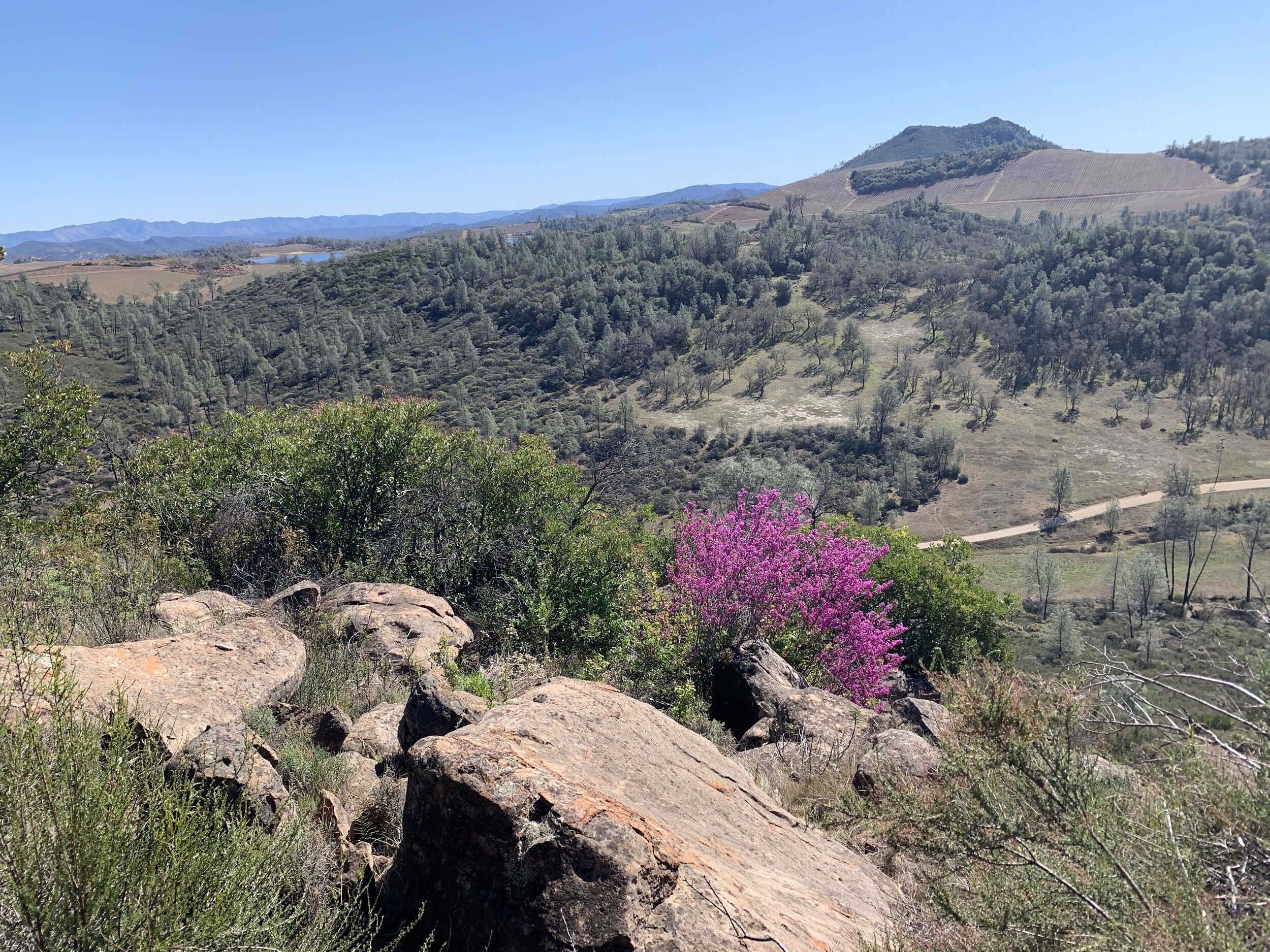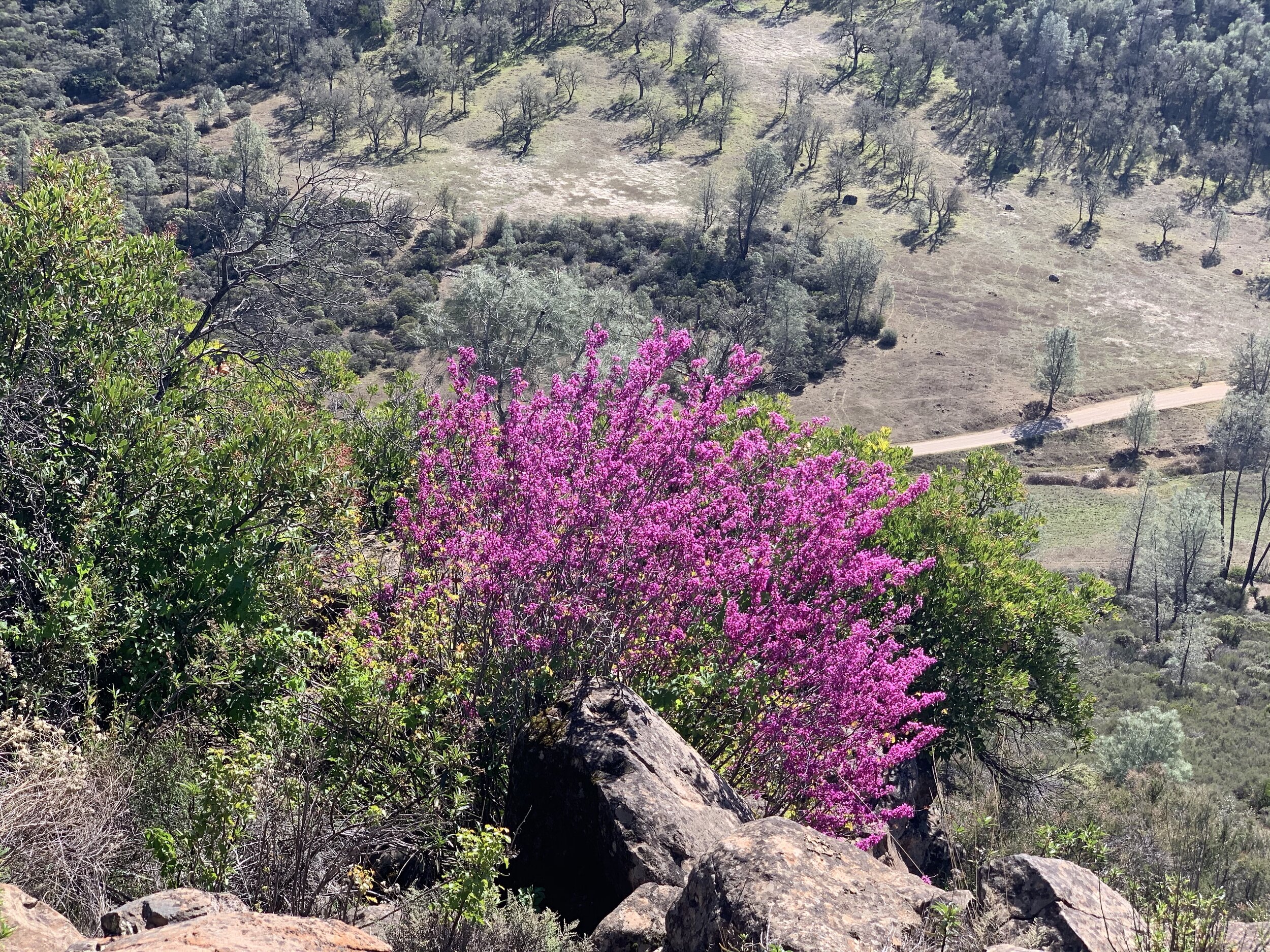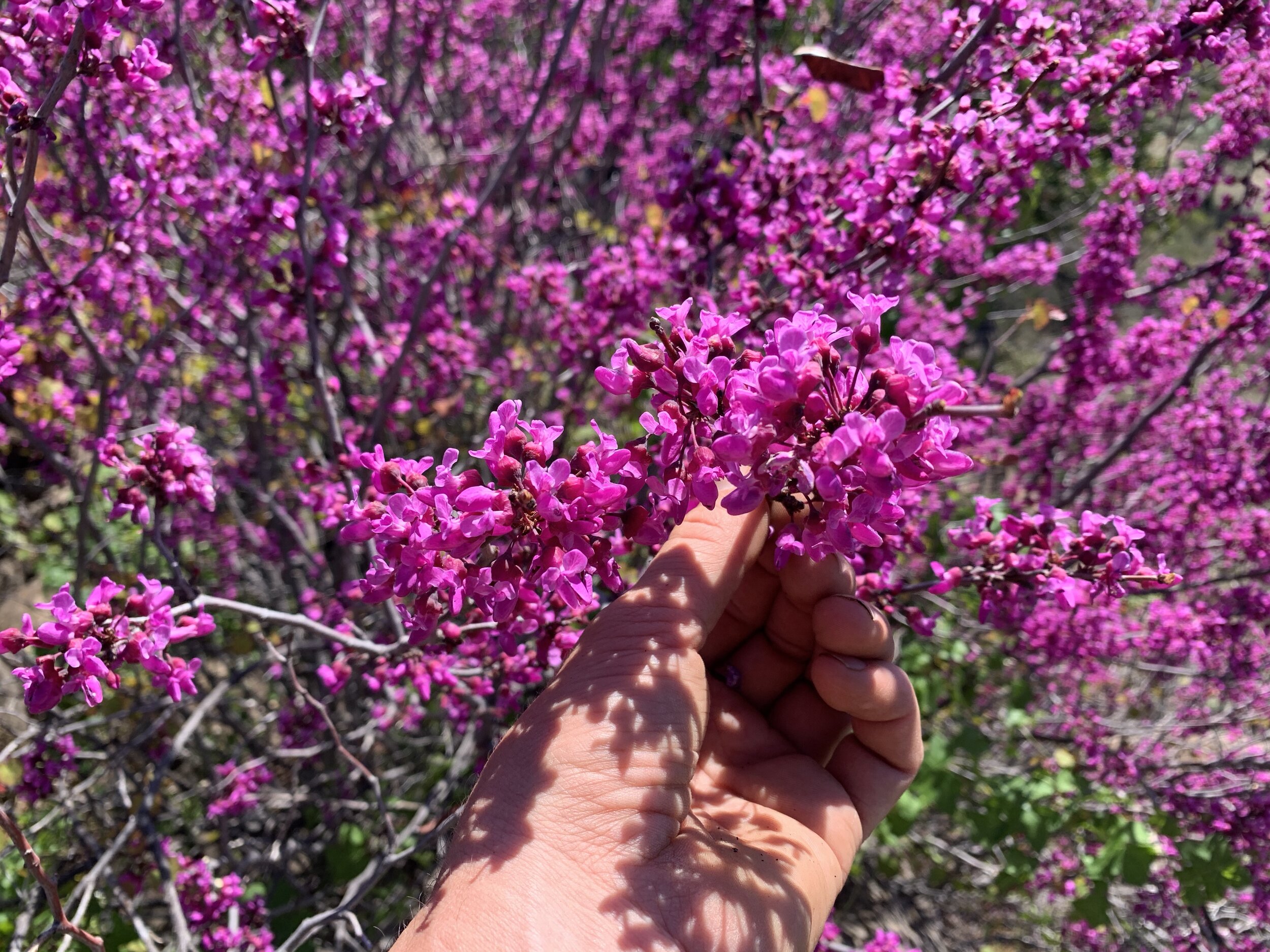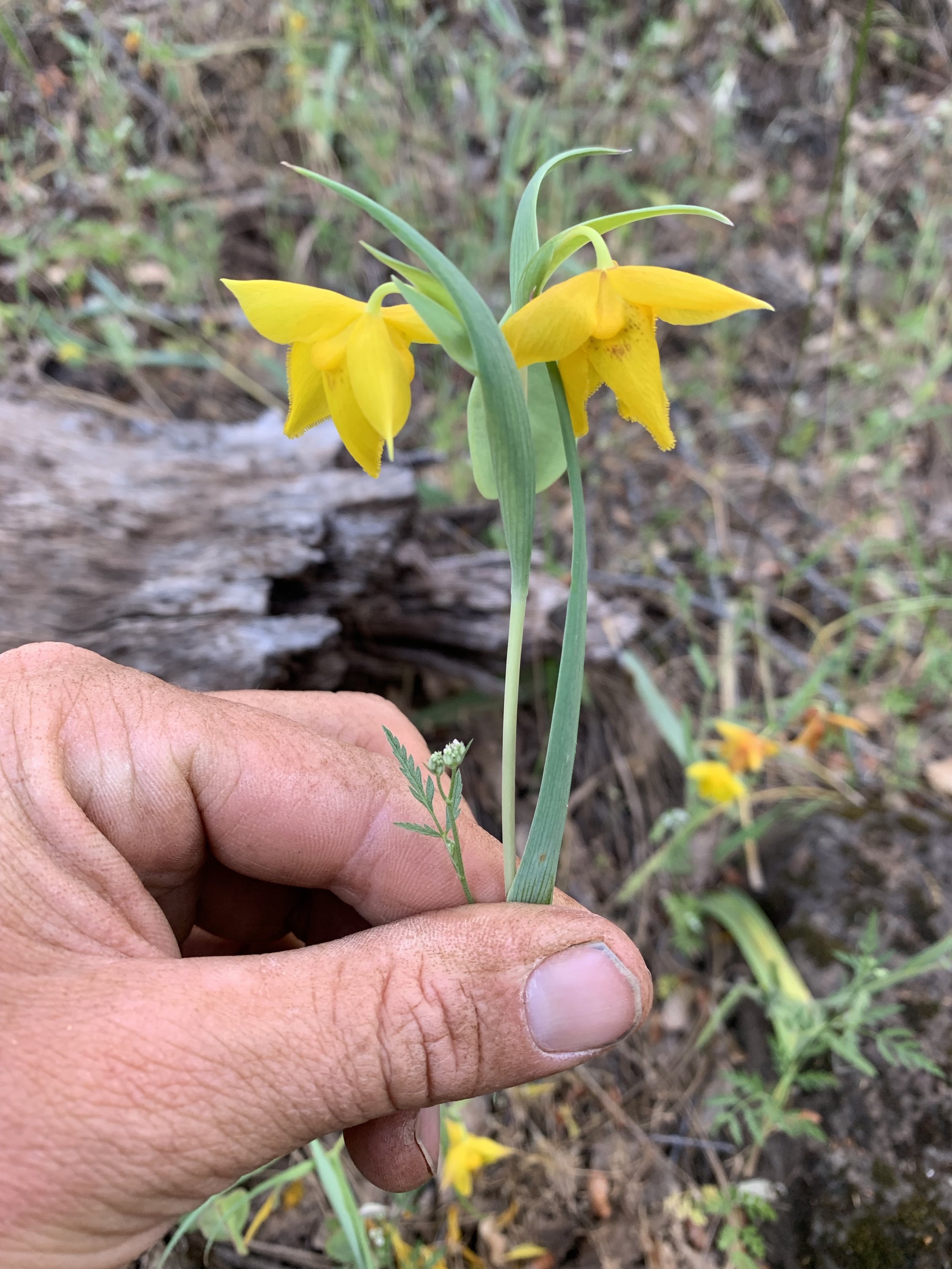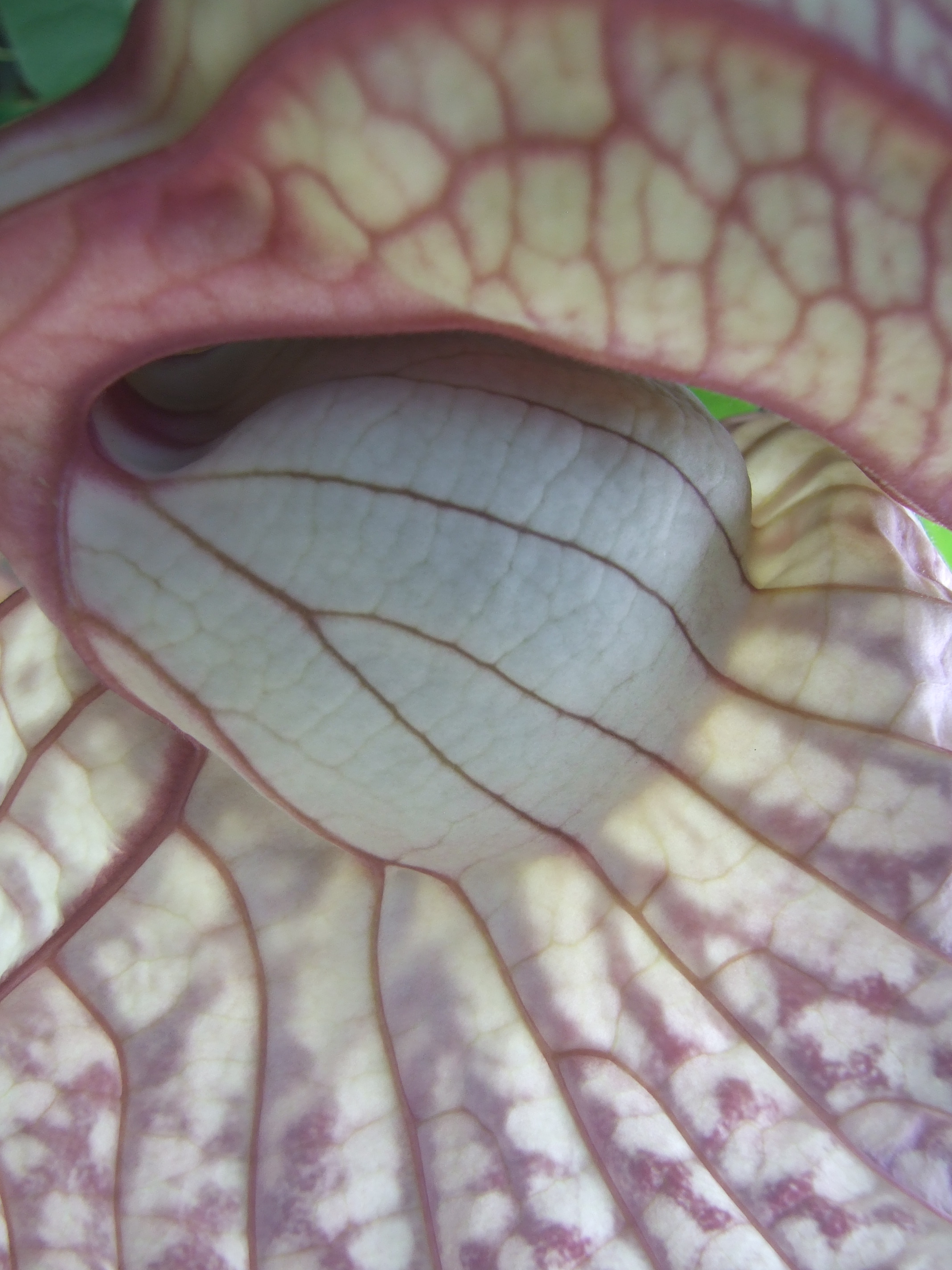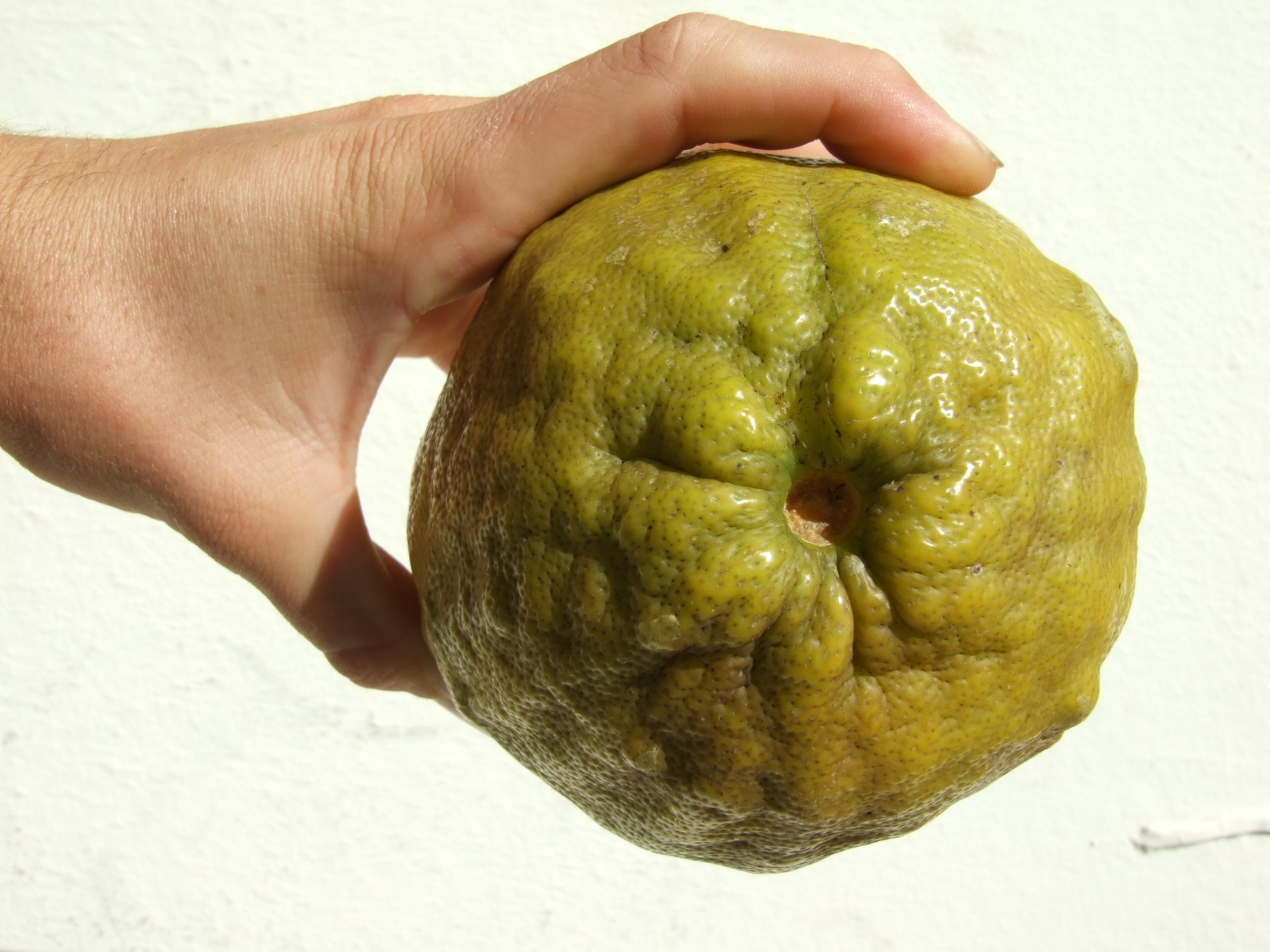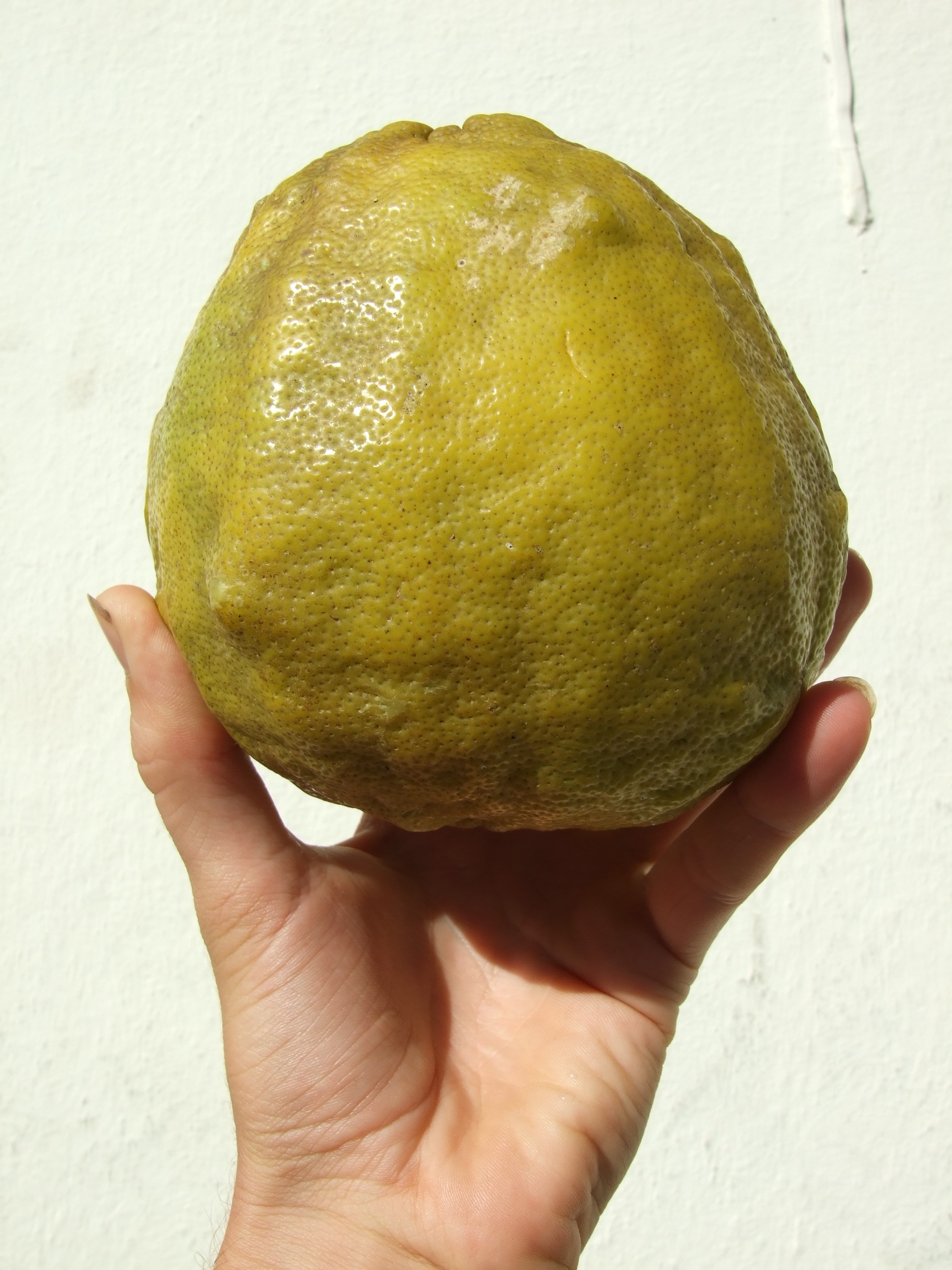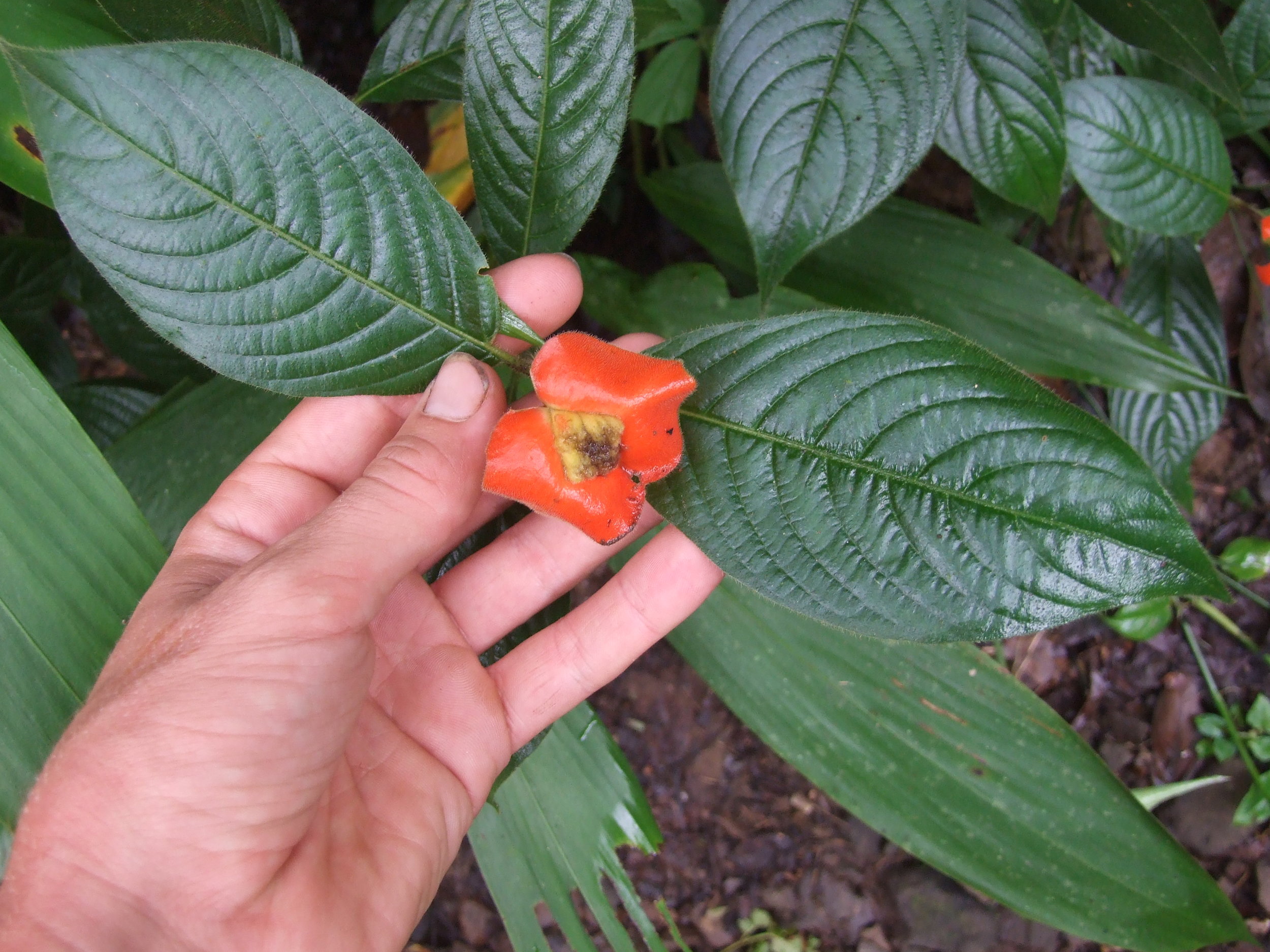California Flannelbush - Freemontodendron californicum
Freemontodendron californicum, or California Flannelbush / Freemontia, is an ancient member of the Malvaceae family, which includes former Sterculiaceae and Bombacaceae.
Fremontia is something of a relic among California’s native species. It is a survivor from a period 60 million years ago when California was less mountainous and more tropical. Two other survivors from this same period include fan palms and ironwood trees, still found in desert climates. Freemontodendron can reportedly hybridize with Chiranthodendron pentadacylon, a fascinating tree from Mexico / Guatemala and the topic of past posts on this site.
Although its natural habitat is on rocky slopes of open chaparral or woodland between 1,200 and 6,500 feet of the coast ranges and Sierra Nevada, fremontia also does well in sunny, dry, almost sub-tropical gardens in Marin.
Freemontodendron californicum is traditional Native American medicinal plant, the inner bark's sap that was used as a topical remedy for mucous membrane irritation and for gastrointestinal upset. The wood was also used by the Californian Yokut and Kawaiisu peoples as a building and furniture material, and the bark for cordage and for nets used in acorn cache holding and snare hunting.
Don’t overwater. Excess summer water can kill this drought loving plant. A few deep waterings spaced evenly though the summer will be more then enough to establish the plant.
Redbud - Cercis occidentalis
Red bud blooming in end of February / early March of this year. Seeing the shock of pink from a distance I hiked up to check this one out. A truly spectacular spring blooming native shrub. The blooming plant is covered in numerous kinds of bees and insects.
Malus toringoides - Cut-leaf Crabapple
A plant from Chile kills and eats sheep...
Puya chilensis, a temperate climate evergreen perennial and close relative to the comparatively tame pineapple, catches, kills and feeds off of relatively large mammals, including sheep.
P. chilensis doesn’t consume and digest plants by way of conventional carnivorous plant methods, but nonetheless, it will snag and trap a sheep in its masses of thorns, holding the animal until it dies of starvation, and then it will proceed to feed off nutrients supplied by the decomposing carcass.
The young leaf shoots of P. chilensis can be eaten by people. Baskets and such are made from strong fibers obtained from the leaves and stems of the plant.
Here is a short recent article on Puya chilensis, apparently a 10ft specimen has just bloomed for the first time at RHS Garden Wisely, in England. Cara Smith, a Horticulturist at Wisley had this to say about the rare occurrence: “I’m really pleased that we’ve finally coaxed our Puya chilensis into flower. We keep it well fed with liquid fertilizer as feeding it on its natural diet might prove a bit problematic. It’s growing in the arid section of our glasshouse with its deadly spines well out of reach of both children and sheep alike.”
So, needless to say, Puya chilensis is a great contender for privacy screening / security planting along boarders shared with pesky neighbors.
Here are some photo I have posted previously of a very close relative to Puya chilensis, Puya berteroniana, spectacular in its own regard for its massive aquamarine/blue and orange flower spikes.
Calochortus amabilis - Golden fairy lantern
Calochortus amabilis flowers.
Calopchortus amabilis, another California native flowering bulb. This is a stout branching plant with bright yellow flowers with a triangular outline.
The plant prefers higher levels of shade, and soil humus rich in organic matter, however it grows in the wild in a wide variety of conditions, including full sun, rocky hillsides, chaparral and Serpentine soils. .
In the wild the plant can be found along the North Coast Ranges from Solano and Marin Counties to Humboldt an Colusa County.
As with the bulbs of many Calochortus species, C. amabilis bulbs were traditionally eaten by Indigenous peoples in the region. Bulbs were baked or boiled and eaten in a similar way as sweet potatoes. Large swaths of land were carefully sustainably managed over generations to provide supply of these delicious and nutritious bulbs.
Young seed pods on Calochortus amabilis
Calochortus amabilis flower close-up.
Aristolochia grandiflora
Aristolochia grandiflora detail.
Citrus, spp., Unidentified giant lemon variety
This is a large Citrus species. The fruit were given to me years ago when I lived in Panama City's Old Quarter. Almost everyday I would visit a fruit vendor in Santa Ana to buy a small watermelon and a pineapple. He knew I worked with plants and collected fruit species so occasionally we would exchange fruit. I would bring miracle fruit, jaboticaba, jackfruit, curry tree fruit, and others, none of which he had ever seen. Him and his family would bring me highly regarded or lesser known fruit varieties from the interior of the country, giant Nance, Algarrobo (Hymenia coubaril), Mangos.
I never verified the species of this particular Citrus, it looks like some kind of Pomelo / Citron hybrid and has a relatively think skin compared to the size of the fruit.
Any thoughts on the species?
Edible Condiment Leaves of Southeast Asia
The following is a list of species whose leaves are used as condiments in Southeast Asia. The list is not, by any means, complete, but includes some of the lesser known, more obscure species.
Acacia farnesiana, Cassie flower, Leguminaceae
Achronychia laurifolia, Ketiak, Rutaceae
Aegle marmelos, Bael fruit, Rutaceae
Allium odorum, Chinese chives, Liliaceae
Ancistrocladus extensus, Ox-tongue, Dipterocarpaceae
Antidesma ghaesembilla, Sekinchak, Euphorbiaceae
Begonia tuberosa, Tuberous begonia, Begoniaceae
Claoxylon polot, Rock blumea, Euphorbiaceae
Coleus tuberosus, African potato, Labiatae
Crypteronia paniculata, Sempoh, Lythraceae
Curcuma domestica, Turmeric, Zingiberaceae
Cymbopogon citratus, Lemon Grass, Graminae
Cyrtandra decurrens, Graminae
C. pendula, Rock sorrel, Graminae
Dendrobium salaccense, Cooking orchid, Orchidaceae
Derris heptaphylla, Seven finger, Leguminaceae
Elethariopsis sumatrana, Frangrant gingerwort, Zingiberaceae
Eugenia polyantha, White kelat, Myrtaceae
Evodia roxburghiana, Sour-relish wood, Rutaceae
Gymura procumbens, Akar, Compositae
Homalomena graffithii, Itch grass, Araceae
Hornstedtia, Tepus, Zingiberaceae
Horsfieldia sylvestris, Pendarahan, Myristicaceae
Kaempferia galanga, Chekur (Galangal), Zingiberaceae
Kaempferia rotunda, Kenchur, Zingiberaceae
Leucas lavandulifoia, Ketumbak, Labiatae
L. zeylanica, Ketumbak, Labaiatae
Limnophila aromatica, Swamp leaf, Scrophulariaceae
L. villosa
L. conferta
L. pulcherrima
L. rugosa
Lycium chinese, Kichi, Matrimony vine, Solanaceae
Lycopersicum esculentum, Tomato, Solanaceae
Medinilla crispata, Medinilla, Melastomataceae
M. hasseltii
M. radicans
Mentha longifolia, Longleaf mint, Labiatae
Murraya koenigii, Curry-leaf tree, Rutaceae
Nauclea esculenta, Pincushion, Rubiaceae
Ocimum canum, Hoary basil, Labiatae
Oenanthe javanica, Shelum, Umbelliferae
Ottelia alismoides, Pojnd lettuce, Hydrocharitaceae
Oxalis corniculata, Sorrel, Oxalidaceae
Pilea melastomoides, Sweet nettle, Urticaceae
Piper lolot, Pepper leaf, Piperaceae
P. caducibracteum
P. umbellatum
Pistacia lentiscus, Pistachio resin tree, Anacardiaceae
Pluchea indica, Indian sage, Comppositae
Polygonum hydropiper, Water polygonum, Polygonaceae
Staurogyne elongata, Cross flower, Acanthaceae
Trachyspermum involucratum, Wild celery, Umbelliferae
Rubiaceae, Psychotria poeppigiana, hot lips, labios de puta
BACKGROUND< ORIGIN AND DISTRIBUTION
Native to the forests of Panama, this photo was taken in Soberania national park on the Pacific Side. The species ranges widely in the tropical Americas, from from Chiapas, Oaxaca, Tabasco and Veracruz in Mexico to the very north of Argentina. It does not occur on the Pacific side of the American cordillera however, and is thus absent from El Salvador and Chile. It is probably also absent from Uruguay and Paraguay.
PROPAGATION AND CULTIVATION
I have propagated this Psychotria poeppigiana from seeds and cuttings collected in the dry tropical forests on the Pacific Coast of Panama.
USES AND ETHNOBOTANY
This species has been used as a hunting fetish, as a magical talisman to facilitate hunting. The leaves and flowers would be placed in a bundle and tied to the collar of dogs when hunting taipir. In Suriname the plant is crushed then boiled, the resulting liquid can be used as wash for headaches. This same preparation can be used as an external wash for sprains, rheumatism, muscular pains and contusions.
The Wayana indians of Suriname use bark raspings from the stem and rub it on a skin rash known as "poispoisi". The red, sap-filled inflorescence are used for an antalgic to treat earache, administered by dropping the sap into the ear canal. The inflorescence is used to remedy whooping cough.
This species of psychotria has also been used as a P. viridis analogue in ayahuasca, containing significant amounts of DMT.

